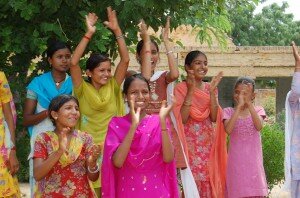eBay Holiday Program
eBay Inc. donates 15,000 Solar Lights for school children in India and Africa
In December 2008, employees of eBay Inc., a leading Silicon Valley technology company received an unusual annual holiday gift. It was not a traditional trinket or gadget that would be forgotten a few moments later.
The employees received a heartwarming letter from the CEO informing them that the company had donated 15,000 solar lights – to be distributed one per child in rural India and Africa on behalf of the employees.
The product is a solar powered LED light that is eco-friendly, robust and built specifically for rugged conditions. It can withstand falls on hard surfaces and water or dust without being damaged. The solar light produces ~500 lumens of clean white light versus ~10 lumens of light from a kerosene lamp.
Additional benefits of solar lights extend to health and the environment. Solar power is environmentally friendly with no harmful carbon emissions.
The focus of this distribution is to give children a chance to study in rural India and Africa. Distribution of these lights started in August 2008 and will continue over the next six months. Some of the places we are trying to reach can only be accessed via trains or even camel and on foot. As these lights are distributed to various parts of the world, you will be able to track the impact of these lights from this site. You can read stories of families and children, review post cards from them and watch videos and photos albums, showing the impact of these lights on their lives.
Most of the children in rural communities do not have access to any education. Their families are uneducated and poor, living in the most basic of conditions. Adults spend their entire lives providing food and shelter for the family. Children may have to walk for several hours to get to a school and work side by side with the adults during any free time. The schools are basic in their infrastructure and range from very simple to somewhat adequate in facilities.
A village home is usually a simple mud hut with one large bedroom. If they are lucky, there may be a small courtyard in front of the room. The entire family lives in that hut. There is no running water or electricity. The huts are dark even during the day and once the sun goes down most activities grind to a halt. Kerosene lamps are then lit, but provide poor lighting and often result in respiratory issues or burns and accidents.
The solar lights are going to have a very significant impact on the lives of these families and children.

